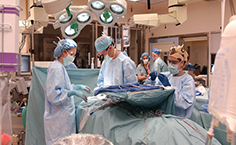Síndrome de burnout en medicina de urgencias
Burnout syndrome in emergency medicine
Dubravka Ivanic1, Visnja Nesek Adam1,2,3, Ivana Srzic1, Anika Stepic1 and Hrvoje Pintaric4,5
Hong Kong Journal of Emergency Medicine 2017:24(6)
Abstract
Background: Occupational burnout syndrome generally develops in individuals of helping professions and is considered to result from long-standing stress. Burnout syndrome is characterized by loss of interest, fatigue, or frustration, the negative consequences of which affect the individual's performance, thus being a major factor that influences the quality of work. Objectives: The aim of the study was to assess the existence of burnout syndrome in medical staff working at hospital emergency department. Methods: The study included 120 subjects working at emergency departments. The following two questionnaires were used: Copenhagen Burnout Inventory and Copenhagen Psychosocial Questionnaire. Likert scale was employed on scoring the answers offered in the questionnaires. Statistical analysis was performed using the exploratory factor analysis, analysis of variance, Bonferroni test, and Pearson correlation coefficient. The level of statistical significance was set at p < 0.05. Results: Study results revealed that the subjects suffer mostly from the symptoms of fatigue due to occupational burnout and exhaustion at the end of the day. The prevalence of burnout syndrome was highest among subjects with 11-15 years work in emergency department, while lower risk was recorded in those nurses and physicians who reported a higher level of social support, sense of community, and feedback information. Conclusion: Results of the study confirmed the existence of burnout syndrome in medical staff working at hospital emergency department, with the highest prevalence recorded in those working at this department for more than 11 years. The main burnout symptoms reported by study subjects were fatigue, exhaustion at the end of the day, and feeling that they were giving more than they were receiving in return. Burnout syndrome was found to be less common among those nurses and physicians who reported a higher level of social support, sense of community, and feedback information.
Keywords Burnout syndrome, medical staff, emergency department
| 







